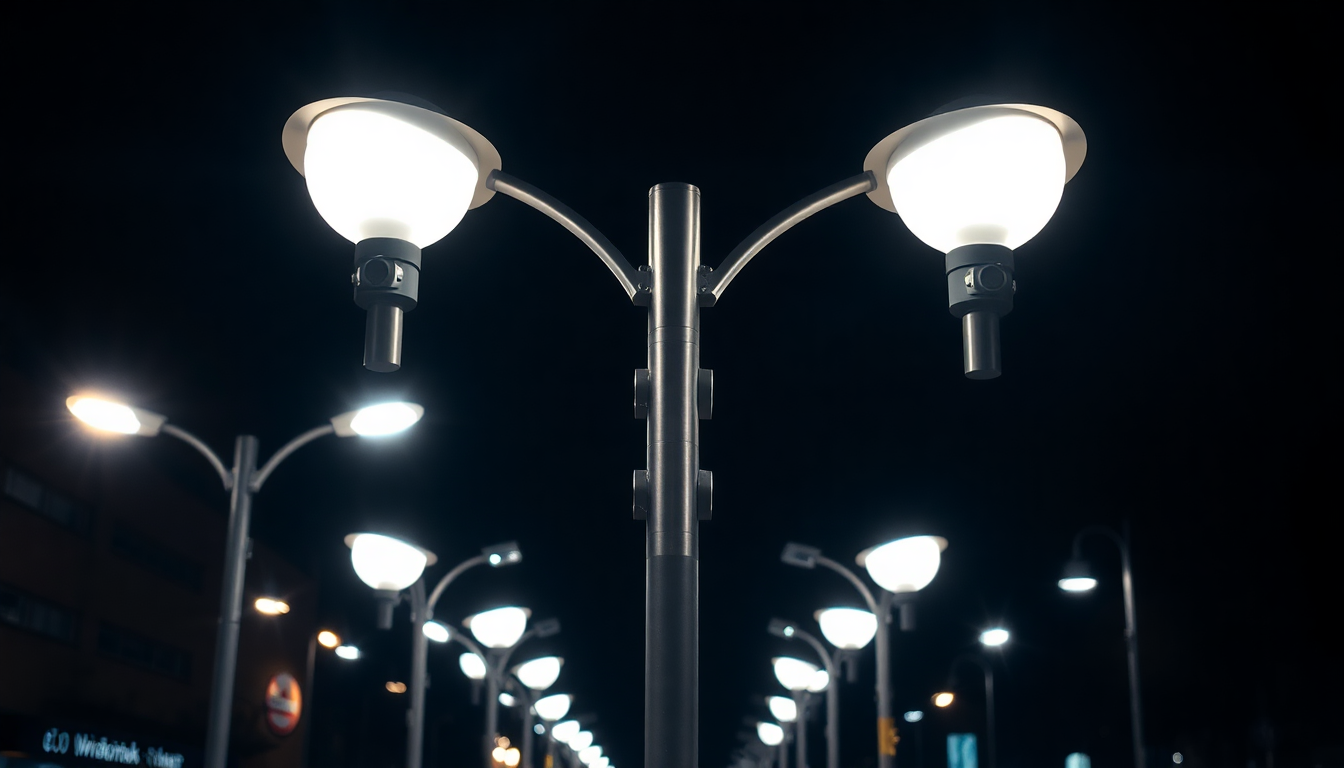Introduction
In 2025, residential property management is witnessing a technological revolution driven by the rapid advancements in IoT (Internet of Things) and AI (Artificial Intelligence). One of the most significant areas benefiting from these innovations is night lighting systems. Traditionally, outdoor and indoor lighting served basic functions—illumination for safety, security, and aesthetic appeal—but lacked adaptability, efficiency, and intelligent responsiveness. Now, with IoT and AI, night lighting is transforming into a sophisticated, future-proof system capable of optimizing safety, reducing operational costs, and enhancing overall living environments.
This comprehensive guide explores how IoT and AI are shaping the next generation of night lighting solutions, why they are vital for modern residential properties, and how property managers can leverage these technologies to stay ahead in the rapidly evolving real estate landscape.
The Critical Role of Night Lighting in Residential Properties
Night lighting plays a pivotal role in ensuring safety and security in residential settings. Well-designed lighting can:
- Prevent accidents such as trips and falls, especially for elderly residents or individuals with mobility issues.
- Secure property perimeters by illuminating pathways, driveways, and entry points.
- Deterrence of criminal activities by increasing visibility around the property.
- Establish a welcoming ambiance that enhances residents' comfort and property aesthetics during evening hours.
Despite its importance, traditional lighting systems are often static and inefficient, leading to unnecessary energy expenditure and limited responsiveness to real-time needs.
IoT's Transformative Impact on Night Lighting
Connectivity and Remote Management
IoT devices connect various lighting fixtures through wireless networks, enabling real-time management, monitoring, and data collection. Key capabilities include:
- Remote Control: Property managers and residents can turn lights on/off or adjust brightness remotely via smartphone apps.
- Automated Scheduling: Lights can be programmed to operate on customized schedules, reducing waste.
- Occupancy Sensing: Motion sensors detect presence and activate lighting only when needed, enhancing energy efficiency.
Data-Driven Insights
IoT sensors gather valuable analytics on energy consumption, fixture performance, and environmental conditions. This data allows proactive maintenance and system optimization, minimizing downtime and costly repairs.
AI's Role in Elevating Night Lighting Safety & Efficiency
Intelligent Optimization
AI algorithms analyze patterns from IoT sensors and behavioral data to modulate lighting levels dynamically, ensuring maximum safety without excessive energy use. Features include:
- Adaptive Brightness: Adjusts light intensity based on factors such as ambient light levels, weather, and resident preferences.
- Color Tuning: Changes color temperature for better visibility or mood setting.
- Situational Response: Triggers specific lighting responses during emergencies or security breaches.
Enhanced Security with AI
AI-powered security cameras integrated with lighting detect and analyze suspicious activity, automatically activating lights to deter intruders and alert security personnel. Facial recognition and pattern analysis further improve security precision and response times.
Key Benefits of IoT and AI-Enabled Night Lighting
The integration of IoT and AI in night lighting systems offers a multitude of advantages for residential property management, including:
- Unmatched Safety: Intelligent lighting responds instantly to occupancy and security threats, reducing risks.
- Energy Efficiency: Smart controls significantly lower electricity bills by avoiding unnecessary lighting.
- Operational Cost Savings: Predictive maintenance minimizes downtime and repair costs.
- Property Value Increase: Modern, smart infrastructure attracts prospective tenants and buyers, establishing a competitive edge.
- Sustainability Goals: Reduced energy consumption aligns with eco-friendly initiatives and green building certifications.
Strategies for Implementing Smart Night Lighting Systems
- Comprehensive Assessment: Review existing infrastructure, determine compatibility, and identify specific safety and security needs.
- Technology Selection: Choose reliable IoT sensors, AI platforms, and integrated control systems with scalability in mind.
- Cybersecurity Measures: Ensure robust encryption, secure network protocols, and regular updates to protect against cyber threats.
- Resident Engagement: Educate residents on system functionalities and benefits to encourage cooperation and feedback.
- Scalability & Future Readiness: Opt for systems that can expand with emerging technologies such as AI-driven analytics, weather integration, and voice control.
Case Studies Showcasing Success
Many forward-thinking property managers already realize the benefits of AI and IoT-enabled night lighting:
- EcoResidences Development: Reduced energy costs by 35% after implementing occupancy sensors and AI-adjusted lighting schedules.
- SafeCommunity Project: Automated security lighting integrated with surveillance reduced criminal incidents by 50% within the first year.
- Luxury Apartment Complex: Residents reported increased safety perception and appreciated personalized lighting controls.
The Future Outlook: Night Lighting in 2025 and Beyond
Looking ahead, night lighting systems will become even more sophisticated with advancements like:
- Weather-Adaptive Lighting: Systems automatically adjust based on weather conditions to ensure optimal visibility.
- AI-Powered Security Analytics: Real-time threat detection and predictive security responses.
- Integration with Smart Homes: Seamless coordination with indoor systems for a unified living experience.
- Sustainable Energy Sources: Incorporation of solar-powered lighting and energy storage solutions.
- Resident Personalization: AI learns resident preferences to tailor lighting atmospheres according to individual needs.
Conclusion
As residential property management enters 2025, future-proof night lighting systems driven by IoT and AI stand at the forefront of safety and efficiency innovations. These technologies not only enhance security, reduce operational costs, and promote sustainability, but also create more comfortable, secure, and attractive living environments. Embracing these solutions today is essential for property managers aiming to uphold competitive advantage and meet the modern expectations of residents.
By investing in intelligent, adaptable, and resilient lighting systems, residential properties will be better prepared to face future challenges and harness the full potential of smart technology. The future of night lighting is not just bright—it’s smart, safe, and sustainable.




Leave a comment
All comments are moderated before being published.
This site is protected by hCaptcha and the hCaptcha Privacy Policy and Terms of Service apply.